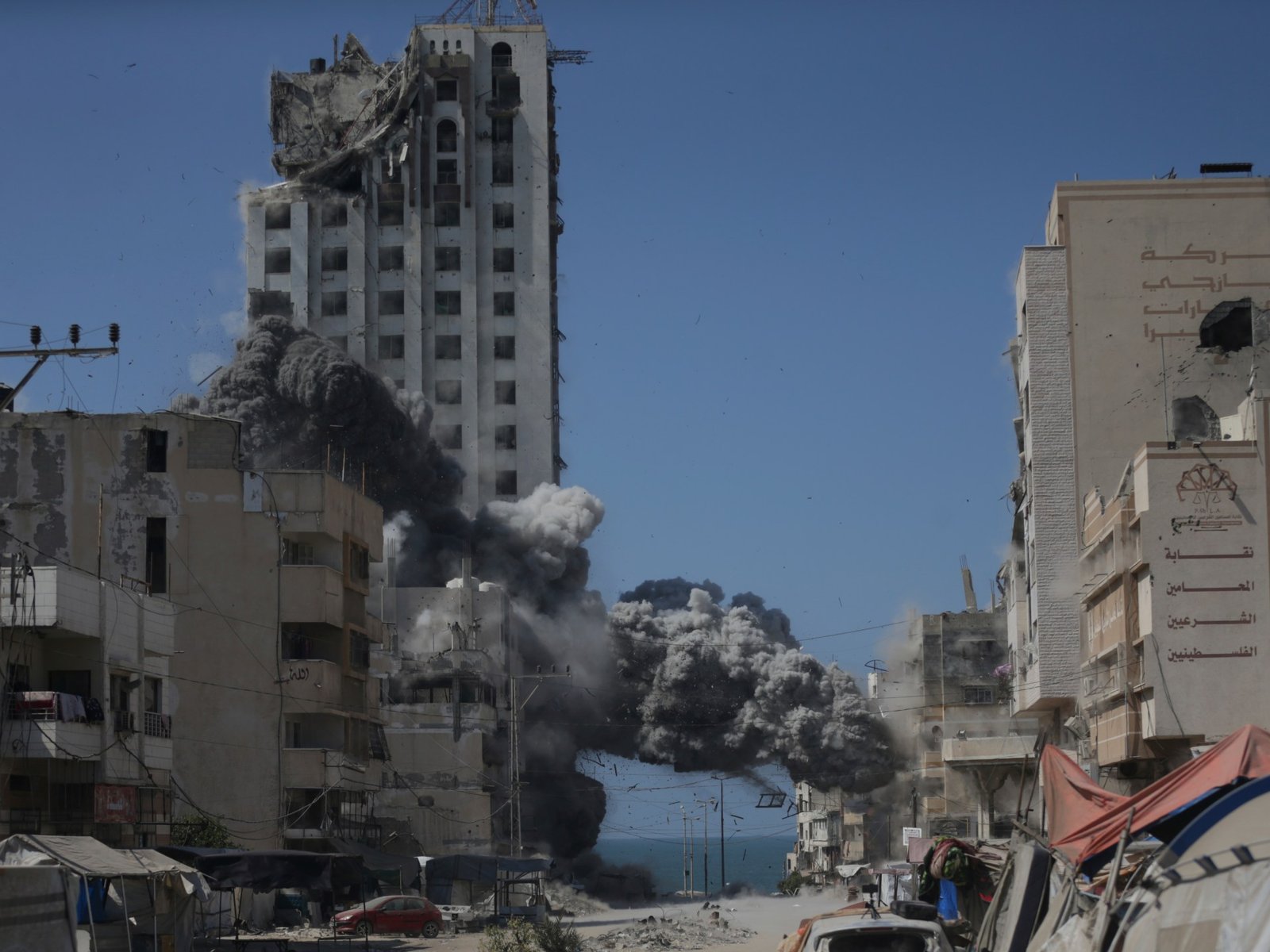Recent Developments in Gaza: Destruction and Humanitarian Crisis (October 2025)
In a significant escalation of violence, Israeli forces have targeted and demolished the Al-Ghafri high-rise, the tallest residential building in Gaza, during a comprehensive air assault on Gaza City last Monday evening. This aggressive campaign has exacerbated the already dire situation, prompting hundreds of thousands of residents to flee the area in search of safety.
Francesca Albanese, the United Nations special rapporteur on the occupied Palestinian territories, has raised alarms over Israel’s reported use of unconventional weapons, allegedly aimed at forcibly displacing Palestinians from Gaza City, the largest urban center within the enclave.
Israeli media outlet Channel 12 has reported unprecedented levels of airstrikes, particularly focused on the northern and western sectors of the city. According to the Palestinian Civil Defence, over 50 multi-story buildings have been leveled in recent weeks as Israeli military efforts intensify in a bid to control the city.
Neighborhoods across Gaza have been left in ruins. In Zeitoun, more than 1,500 structures have been destroyed since early August, rendering entire blocks uninhabitable. For the third consecutive day, Israel’s Minister of Foreign Affairs, Israel Katz, has shared footage of these attacks, characterizing them as efforts to eradicate what he describes as “terror towers.” However, he did not provide any proof linking the residential building to Hamas.
Throughout a prolonged conflict lasting 23 months, Israeli forces have repeatedly targeted civilian areas, including schools and hospitals, with devastating consequences. Gaza’s Ministry of Health reported that over the past 24 hours, 51 Palestinians—including six-year-old twins—lost their lives in Gaza City alone. Additionally, three journalists were among those killed in separate airstrikes, raising the death toll of media workers to nearly 280, marking this as one of the deadliest conflicts for journalists on record.
Since the onset of hostilities in October 2023, estimates indicate that at least 64,905 Palestinians have been killed, with countless others wounded or trapped beneath debris.
Widespread Assaults and Displacement
Israel’s security cabinet approved a strategic plan in August aimed at capturing Gaza City, leading to a relentless barrage that has coerced residents southward towards al-Mawasi. Many Palestinians express skepticism about their return, fearing the journey itself. One resident shared his harrowing decision to evacuate with his family amid relentless attacks: “For over three days, they’ve targeted every school and abandoned Shati camp… You can’t even move.” He lamented the necessity to leave with only the bare essentials.
Despite being driven into al-Mawasi, designated by Israel as a “safe zone,” the community remains vulnerable to ongoing assaults. The Health Ministry has warned of an acute lack of basic necessities like water and food, raising concerns about potential disease outbreaks. Displaced individuals face both direct attacks and risks of fatality, even within makeshift camps, a clear violation of international law.
Aid Blockades and Humanitarian Crisis
Israeli troops have reportedly killed at least five Palestinians awaiting food aid near al-Mawasi, contributing to a deepening famine in the region. The Integrated Food Security Phase Classification declared a state of famine in northern Gaza on August 22.
The UN Office for the Coordination of Humanitarian Affairs (OCHA) highlighted that of 17 humanitarian missions coordinated with Israel recently, only four received approval, with urgent deliveries—like water supplies—denied entry altogether.
Albanese has called for accountability, stating: “This genocide could not occur without the complicity of various international actors.” She urged nations to take action to end Israeli impunity and ensure compliance with international law, reinforcing the urgent need for humanitarian intervention in this escalating crisis.

